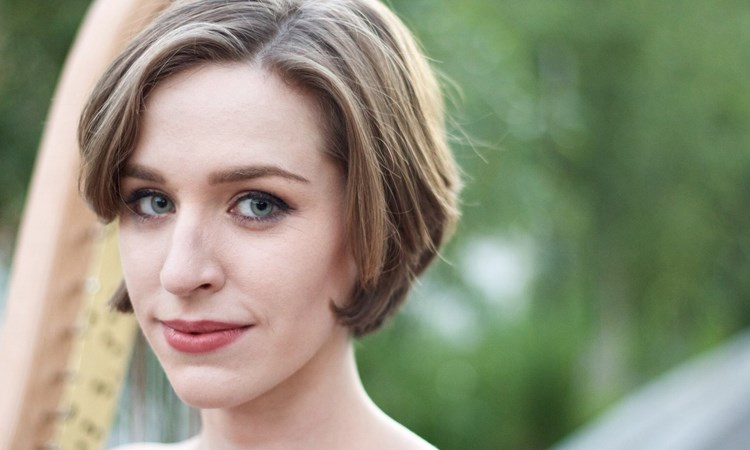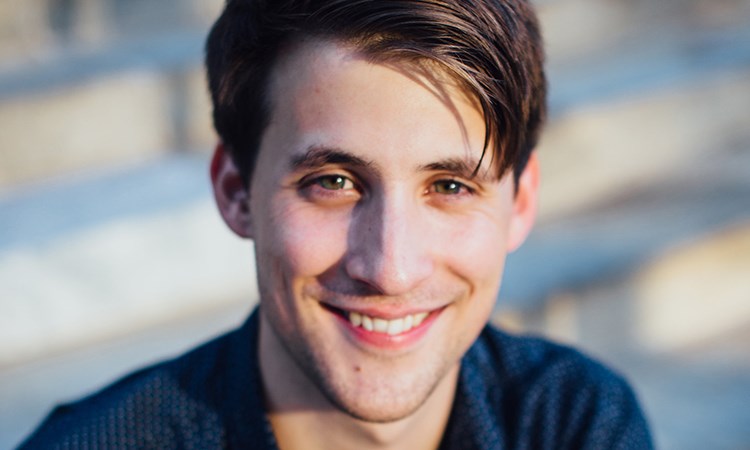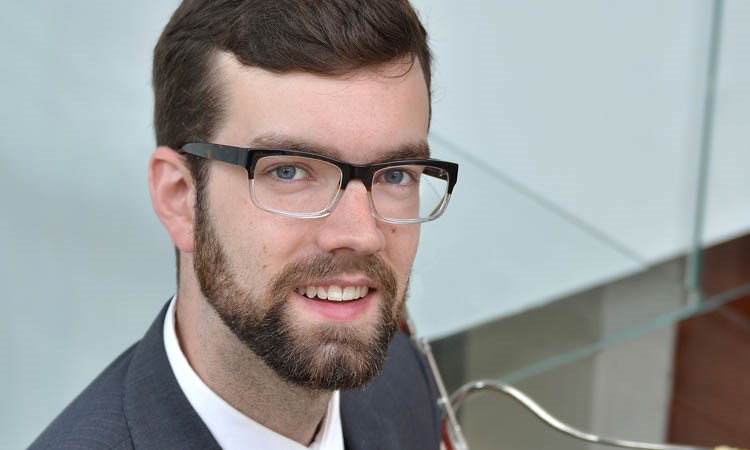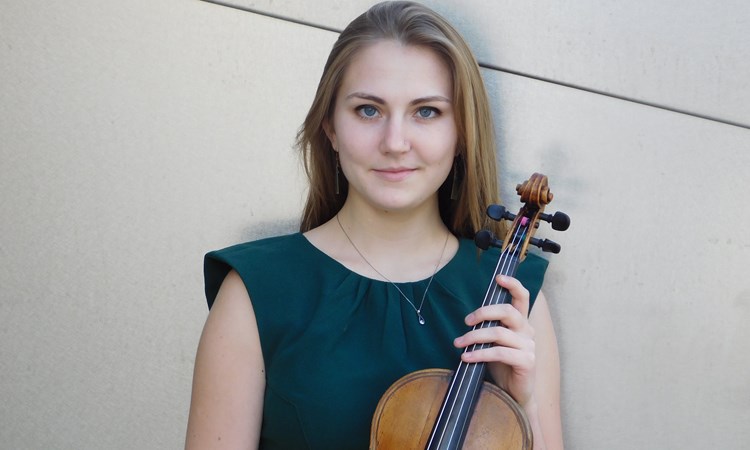New World members take the spotlight with (mostly) concerto rarities
The New World Symphony’s annual Concerto Showcase program gives some of the orchestral academy’s talented fellows a chance to take center stage. On Sunday afternoon at the New World Center in Miami Beach, three of the ensemble’s members scored impressively in rarely heard repertoire while a fourth gave a proficient reading of a 20th-century classic.
Chloe Tula opened the program with the Harp Concerto in E-flat Major by Reinhold Glière. Following the heritage of Tchaikovsky and contemporaneous with Rachmaninoff, Glière was a musical romantic. Unlike those masters, his musical idiom tended to work best in short pieces. Glière’s large scale symphonies and ballet scores are more notable for orchestral bombast and thumping than thematic inspiration.
His 1938 concerto is certainly a great gift to harpists who have a limited concerto repertoire. The initial Allegro moderato opens with arpeggiated chords that coalesce into a theme that sounds like early Rachmaninoff. Tula’s elegant phrasing effectively displayed the harp as a melodic instrument. The substantial cadenza, charged with vigor by Tula, resounded especially vividly in the crisp New World Center acoustic.
A rather unimaginative theme forms the basis of the second movement variations but there is a felicitous duo for harp and solo cello. While the string section managed to capture that unique vibrato-laden Russian orchestral palette, Glière’s well-crafted instrumental writing would have benefited from a lighter touch from conductor Edwin Outwater. Tula’s harp line sparkled in the catchy folk-inflected tune of the finale. Throughout the half hour work, her precision and verve were manifest despite the music’s fitful inspiration.
In 1804 Anton Weidinger, a member of the Esterházy palace orchestra, invented a key trumpet which expanded the instrument’s range from ten notes to thirty. Johann Nepomuk Hummel wrote his Trumpet Concerto in E-flat Major for that new instrument. Utilizing a modern valve trumpet, Ansel Norris gave a terrific reading of this showpiece.
Hummel’s 18-minute Trumpet Concerto has the virtue of brevity and Norris, a born entertainer and well-schooled player, seemed to be having such a great time playing it that his enthusiasm was infectious. The performance got off to an unpromising start with Outwater’s sluggish tempo in the orchestral introduction and some ragged playing from the strings. From his first entrance, Norris’ rounded tone and beauty of timbre immediately commanded attention. His absolute security and flawless technique were totally bereft of harshness. In the bugle-like calls and flourishes of the Rondo finale, Norris’s showmanship enhanced the zest of his playing.
Carl Maria von Weber was a composer of greater stature and his charming Bassoon Concerto in F Major was a great vehicle for Darren Hicks. Hicks’s large tone and agility easily swerved around the runs and curves of the martial first movement. More lyrical moments were spun with striking spaciousness. The Adagio of this 1811 score presages the operatic Weber with two horns joining the bassoon in melodic flight. Hicks and the two brass players played beautifully and in synch. The final Rondo presents the bassoon as buffoon. Weber’s writing takes the instrument down to its lowest depths and Hicks romped through this comedic Rondo with gusto.
Samuel Barber’s Violin Concerto is an American classic. This score demands playing of intense virtuosity and supple musicianship. While Emerson Millar had the technical demands in hand, her performance lacked distinction, with her sound too light and undernourished. The performance’s most effective moments came in the Andante. Megan Kyle’s beautiful oboe solo was seconded by Millar’s soaring reprise of one of Barber’s most gorgeous melodies. Here too the orchestra was poorly balanced by Outwater, with trumpets and horns overwhelming the string lines. Millar kept pace in the speedy Presto finale but was only fitfully audible over the full ensemble.
The New World Symphony season continues with John Adams conducting his Tromba lantana, David Lang’s mountain, Samuel Carl Adams’ many words of love, Timo Andres’ Piano Concerto No. 3 (“The Blind Banister”) with soloist Jonathan Biss and Ingram Marshall’s Flow with Andres as piano soloist 7:30 p.m. Saturday at New World Center in Miami Beach. nws.edu; 305-673-3331.
Posted in Performances
Leave a Comment
Mon Mar 26, 2018
at 3:07 pm
No Comments



